Is it Better to Post Fewer Long Articles or More Short Articles?
Published by James Parsons • Content Marketing • Posted September 16, 2015 ContentPowered.com
ContentPowered.com
This question is one many bloggers struggle with on a daily basis. On one hand, you have frequent updates, which are generally considered to be valuable to SEO. After all, every piece of content you post is an opportunity to be found in organic search, linked to on other blogs, and shared on social media. It’s a chance to go viral, a chance you won’t have if you don’t post.
On the other hand, if you don’t have a large audience or if your niche is very narrow, trying to post every day is going to quickly burn through all of your best ideas and most of your mediocre ideas. Even title generators can only bring you so far; you’ll still end up with a lack of content after as little as a year.
First, my thoughts.
A Personal Perspective
It wasn’t all that long ago that this site was posting updates seven days a week. The posts we wrote hovered around 1,200 words on average, which was enough to cover most subjects without fluffing them up too badly, but it wasn’t enough to get really deep into content. Now and then, a post would go up that could easily have been doubled in length. Some posts could have been cut down, too. It was kind of a wash.
Eventually, we changed formats to 2 posts per week, with a little over double the target word count; 2,500 on average. This has proved to be a pretty good move, all things considered. We’re able to cover topics like this one in greater detail, and we can focus more on broader topics instead of having to take one topic and slice it apart into smaller posts.
My general advice is to write to the size of your audience. If your audience loves your content and is clamoring for more, give them more. If they’re overwhelmed with what you’re giving them, you can scale back.
Generally, I like to advise people to start around 2-3 posts per week, particularly for sites with small audiences. This gives you plenty of content to rank, but it also gives you plenty of time to spread out your good ideas and cover them in detail.
As your audience grows, so too can your post frequency. You’ll notice that many of the most popular blogs online tend to post anywhere from two to 20 posts in a day. The thing is, they also have wide-reaching networks of contacts, tons of writers on staff, and freelancers pounding at the gates for the chance to work for them. Small business blogs? Not so much.
I would say our plan of posting seven days a week was a little overly ambitious. It burned through a lot of post ideas that could have been done better and given more attention. It put a lot of stress on the contributors, who often had other things to do. Most importantly, it just didn’t have a good enough return on investment. Scaling back and focusing on longer, better posts less frequently has been a good move all around.
Dividing the Problem
When you talk about the dichotomy between short, frequent posts and long, infrequent posts, you’re actually performing a very unscientific test. You’re changing two variables at once, and failing to test them individually. So let’s split apart the problem and look at it in another light.
There are two aspects to the question that need to be addressed. The first is the length of the blog posts. Which is better; 1,200 word posts or 2,500 word posts? Should you go longer, up to 5,000? Should you stray shorter, closer to 750 or 800?
The second is frequency. How many updates should you post on your blog? Should you post once per week, twice per week, three times per week? Should you post five days, seven days, or even multiple times per day?
The way these two problems combine is interesting. You can post twice a week or you can post twice a day, and nothing says you have to have different word counts for each style. The reason there’s a dichotomy between them is because of the effort involved. 2×2,500-word posts per day would be an incredible amount of work, and would require numerous writers and contributors, a dedicated editorial team, and a lot of planning ahead. That’s why most high volume blogs either have all of that, or post articles in the 1,000-word range. Some go even lower, into word counts I’d be hesitant to use.
Let’s take a look at some data for each problem individually.
How Long Should Blog Posts Be?
My personal inclination is that longer blog posts are better. You can dig deeper into content, you can cite and analyze more data, and you have a better chance of out-doing anyone else who has written on the same subject before. On the other end of the scale, I would be very hesitant to publish a post under 900 words. If your content is too short, there’s not a lot you can say of value about the topic. That can lead to Panda-based thin content penalties, which can hurt your site significantly.
The exception to this minimum length rule, in my mind, is newsworthy content. If you’re a site that covers trends and news, something like PC Magazine or People or Inc, you’re going to need speed more than you need depth. That’s why these sites have a lot of people posting short articles very frequently; it allows them to cover every subject from every angle, quickly, before someone else can capitalize on it.
That’s just my personal experience and inclination. Now let’s look at what data has to say.
First, let’s look at what Neil Patel has to say. He begins by bringing up several myths about content. For one thing, he points out, posting short posts exclusively is not a good idea unless you’re in a unique position, like Seth Godin, a popular and insightful personal blogger. He also points out that the success of some web pages, like Seths and his landing page, that have under 300 words of content. This doesn’t have much bearing for business blog posts, though. Landing pages are a different beast.
The most important takeaway, other than the analyzed data, is that more than just the length of your content is important. You also have to make sure your post has substance, that it has style, and that it’s formatted properly for the web. Posts should also have a purpose, even if that purpose is nothing more than “educate” or “grow my audience.” There’s also the additional content to consider; it’s okay to write a 300-word post to accompany a longer video or infographic.
Neil references a study performed by SerpIQ, which analyzed the top 10 results for various queries. Posts in the #1-#3 spots all tended to hover around 2,400-2,500 words. As you drop, so does word count, with posts in the 10th spot averaging more like 2,100 words.
This seems to indicate that the best length for posts to rank in search is around 2,000-2,500 words. This helps in many ways.
- Longer content has more space to dig into more complex topics and explain them in a way the average reader can understand.
- Longer content has more space for variety of language, leading to a broader base of keywords for which the post can rank.
- Longer content is often seen as more valuable than shorter content by default. At first glance, a longer article will be given preference, unless it’s obviously spam in some way. It’s not until the reader digs in that they realize it could be all fluff.
- Longer content gives you more room for long-tail phrases that show up in search. The number of longer queries made has been increasing significantly with every passing year.
This is all only relevant to blog posts, keep that in mind. There are different ideal lengths for different types of content, including landing pages, URLs, and social posts. You can see a pretty detailed infographic about ideal lengths here, but I’ll pull out some of the relevant statistics here.
- Blog titles work best at 6 words.
- Blog posts work best when they’re at minimum 1,600 words long.
This data is from Buffer, and you might be curious why they recommend 1,600 words when Neil Patel recommends 2,500+. Well, if you scroll down to the data, they explain. 1,600, they say, is a good baseline minimum. Their best content, though, tended to be 2,500-word posts. They even received on average double the social shares of content in the 2,000-2,500 word range.
Now, before we continue into post frequency, I just want to make a case for other lengths of posts.
There are several good reasons to vary the formula away from 2,500 words.
- If your post is a quick news coverage or announcement, it can be much shorter and still convey all of the relevant information, possibly by linking to a more detailed press release.
- If your post is a tutorial that is heavy on images or videos, it can be shorter, as the article is more of a description of the content or companion piece.
- If your post is a very detailed tutorial or case study, it can be perfectly viable to stretch over 3,000 words or more.
I would recommend not going over about 4,000 or 5,000 words in a blog post, however. Once you’re reaching that point, you can potentially split the post into two, for double the shares and traffic. Alternatively, you can turn it into an ebook and market that for additional value, either to your mailing list or just in terms of dollars.
The Matter of Frequency
Now that we have the idea of length down, let’s look at frequency. Now, 2,500 words is a lot of work for a single blog post, which means if you want a higher frequency, you’re going to need to dedicate a lot of effort to writing, hire other writers, or have your content ghostwritten. These are all viable options, of course, so maintaining daily 2,500-word posts isn’t out of the question.
First of all, there’s a minimum threshold for blog frequency that must be met. Hubspot analyzed this on a monthly basis and found that, unsurprisingly, companies that posted 16+ times per month – once every two days – performed best, while the companies posting 0-2 times per month did the worst.
This trend remained the same in general, though with different numbers and scales, even when they broke the data up by number of employees, by B2B or B2C, and so on.
They also found that the more posts you had on your blog in total, current or not, the more traffic the company received. It stands to reason; every post is an opportunity for inbound traffic, so more posts means more traffic.
Once every two days is not a bad goal. If you try to publish posts on Monday, Wednesday, Friday, and every other weekend, you’re pretty much there. Make it every weekend and you’re right on target.
There are two additional factors to consider; consistency and audience.
Consistency is incredibly important for building an audience. If you’re posting three times per week, make those times consistent. Always post Monday, Wednesday, and Friday. Try to post around the same time every week, even. It helps build habits and train your audience that they can expect new content at certain times, and they should check at those times to see it.
Audience is another factor, and it’s possibly the most important when it’s small. When you have a small audience, making those readers more dedicated isn’t necessarily going to help you much. It’s a better idea, and a better return on investment, to work to grow your audience into a snowball – or at least a self-sustaining crowd – so it can grow without your intervention.
How large of an audience is necessary before you can start to ramp up content? That depends on your business and your goals.
If your audience is small, focus on growing it first. You can do so by writing guest posts, performing interviews, and working on general interest and wide-spreading evergreen content. One or two posts per week, with a focus on outreach in the rest of your time, is plenty.
General Blogging Tips
With this data in mind, here’s a plan you can follow.
- In general, start to finish, shoot for posts in the neighborhood of 2,500 words. However, don’t be afraid to vary it up a little when the subject calls for more or less.
- When your audience is small, focus on maintaining a holding pattern with your blog and work on outreach to grow your audience.
- Once your audience has reached satisfactory levels, start to post more frequently. Try not to change up your schedule too much, but work in additional posts in the gaps.
- Aim to eventually reach 3-4 posts per week, maintaining the 2,500-word ideal. If necessary, hire additional writers or contract ghostwriters to help do the hard work for you. Always make sure to maintain creative and editorial control over your content, if you bring it in from elsewhere.
- Continue to expand your blog posting efforts until they are yielding diminishing returns. At that point, again fall into a holding pattern and focus on more outreach. It should be easier than increasing your post frequency.
Above all, remember that you’re writing to attract and keep an audience, not to attract the search engines. That means your content needs to be readable, relatable, and reliable. It needs to be clear, it needs to be high quality, and it needs depth. If you find that you’re focusing more on keywords and on the mechanics of SEO than you are on data and details of the topic, you’ve fallen into the trap of the poor marketer. Draw back, reorganize, audit, and refresh your blog.
Oh, and don’t worry too much about the specific weekday or specific hour of the day that you publish and share your posts. Optimizing such things will help you, but it’s going to be a minimal amount of help compared to other things you can do to boost your audience first.
Consider it more of an advanced technique, while you’re still working on the basics.
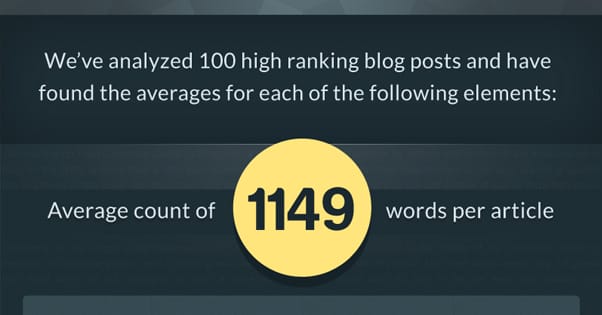

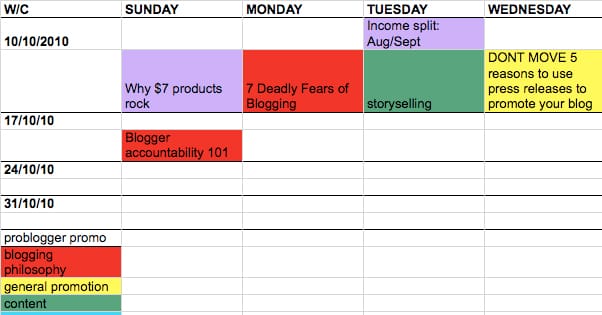
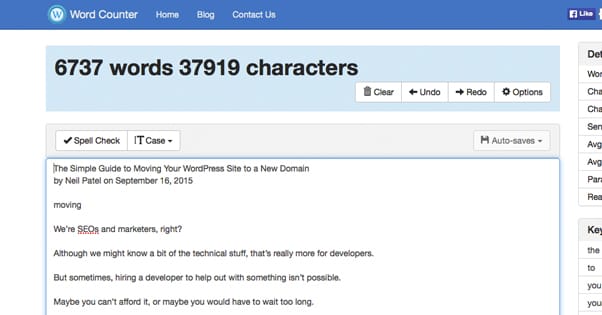
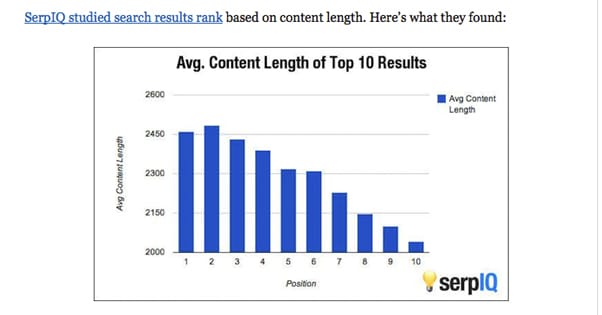
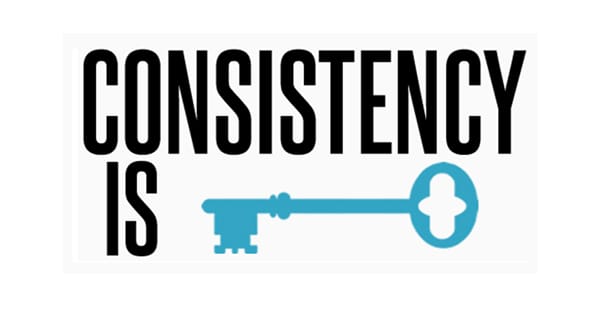





Website Plans
says:Great informative post James, thank you.
I think in general long posts (over the 1k word count) will do better in terms of traffic because a shorter post will need exceptional value and or good links to outrank it. The shorter post has fewer long tail terms, so when it loses its page 1 position(s), it is less valuable to the site for traffic growth.